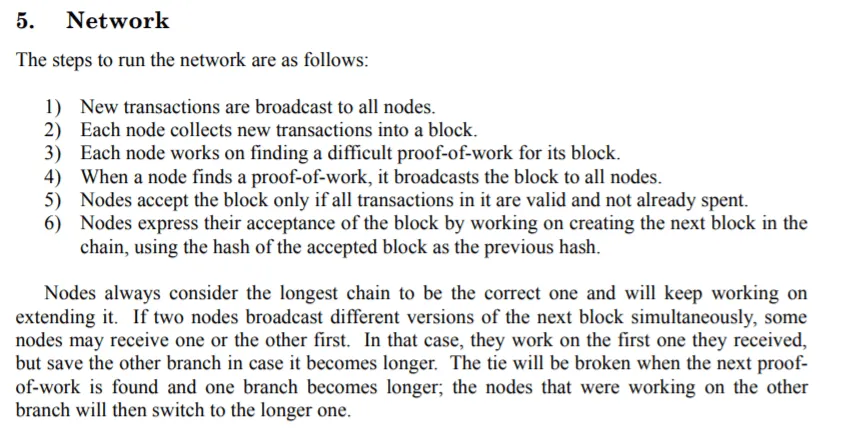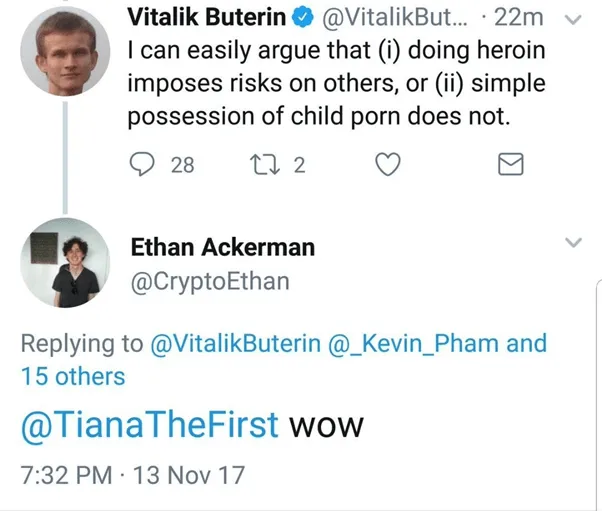|
Getting your Trinity Audio player ready...
|
This article was first published on Dr. Craig Wright’s blog, and we republished with permission from the author.
One of the most fundamental aspects of modern liberal democracy stems from the concept of equality under the law. Such a concept does not refer to the idea of all people having the same amount of money, nor does it represent each person having equal ability and capability. Rather, it means that all people, whether rich, poor, educated, or ignorant, are subject to the same rules and constraints. Yet, such a critical aspect of modern society is being attacked by those who falsely call themselves Bitcoin developers—individuals involved with passing systems including the BTC (Core) network off as Bitcoin.
It is bad enough that the deception is promulgated by those who adhere to anarchy and socialism. The utilisation of false propaganda using a truly neo-Trotskyite methodology would make Orwell’s Big Brother in 1984 green with envy. And yet, it is far worse when officers of the court promote such lies as told by the developers supporting the falsely named digital platform associated with BTC. When law firms acting for digital currency groups falsely promote the concept of cryptocurrency and lie about the concept of nodes to a court, it not merely presents contempt; it is a complete disregard for the court and society.
Whilst it is necessary for a lawyer to support even those accused of murder and other crimes, it is outside the lawyer’s role to lie for the client. Being wilfully blind is no excuse. In promoting the fabrication and falsehood that thousands of nodes would exist on the BTC network, the fraud and the false narrative continue to be propagated. Yet, it is a concept that is easy to understand and easy to discredit. In section 5 of my white paper, I define the role of nodes and how they operate. Importantly, the only consensus methodology deployed in any way in any blockchain network lies in the creation and dissemination of blocks.

The control of the Bitcoin network is distributed between the developers of the network creating the code and the enforcement through the nodes. As explained in my white paper, “Any needed rules and incentives can be enforced with this consensus mechanism.” Yet, some individuals have been promoting the lie, fraud, and fabrication that there were nearly 15,000 nodes on the network. Worse, such falsehood and deception have been propagated by law firms in court.

Such an act does not merely disregard the law. Rather, it demonstrates a fundamentally deep disrespect and contempt for the entire court process, let alone judges and Masters, and shows a criminal level of disrespect for society in general. The definition of nodes in Bitcoin is very simple. As set out in section 5 of my white paper, nodes create and disseminate blocks. It is this method alone that allows the verification and transmission of information across the network. As a result, counting the number of nodes is incredibly simple.
Within any difficulty-adjustment period, the public as a whole can count the number of blocks created by any particular machine or set of machines. The set of machines matters. For example, in 2008, when I was debating with James Donald the nature of Bitcoin, I noted that the system would end in a small series of server farms. Each of the server farms is itself a node1. But, people connected to mining pools do not create blocks, they do not validate transactions, and they don’t act as nodes.
Even a large mining pool with a million clients, if something ever existed at such scale, would be but a single node. Such a commercial entity would form the server farm I talked about when I was ready to launch Bitcoin in 2008. Yet, as misleadingly and fraudulently put on both the bitcoin.org and the Bitcoin Core (or, BTC Core) sites, people are promoting the misleading and deceptive term “full node”2. The call for people to run full nodes is merely a part of the deception.
Running a full instance of the Bitcoin software without creating blocks does nothing to support the network. It does not propagate blocks. It does not verify transactions. It does not increase the decentralisation of the network. The only thing that has been promoted and achieved by the false narrative and absolute lie of Bitcoin having 15,000 nodes is the false idea that governments or regulators would not be able to address Bitcoin. Bitcoin was not designed for such a purpose. When I said in 2008 that Bitcoin would end in server farms, I did not say so because I thought server farms could not be regulated.
I made a mistake as I did not understand the lengths, in terms of the level of deception, that people like Gregory Maxwell and others of Bitcoin Core would go to. I did not understand the deep contempt such individuals felt for courts, government, and even society when I released Bitcoin. I did not understand the level of corruption and lies that such individuals would promote, and how utterly toxic any individual could be, before I released Bitcoin.
If you are ever told that any blockchain network can have more than ten nodes controlling the network, know that you are being deceived.
There is no way to create a blockchain system that is maintained by thousands of nodes. This aspect of Bitcoin was by design. I did not want the system that Bitcoin Core and the Ethereum Foundation fraudulently claim and promote.
Equality under the law applies to all equally
The Core developers seek to act outside of the law. They seek special privileges and rights that do not apply to most people. In promoting lies and contempt, such individuals seek to avoid paying taxes that other members of society must pay. They seek special privileges by calling themselves developers supporting open-source projects. They seek not to be treated the same as other people. They seek not to be treated the same as companies. In making claims about blockchain and cryptography and how open-source projects were special, such individuals say they deserve more rights than everyone else.
In the 2005 court case MGM Studios, Inc., v. Grokster, Ltd., the U.S. Supreme Court correctly determined that peer-to-peer developers were responsible for the software they created3. Yet, in the current world, a movement has started to say that ‘code is law’ and that cases such as Grokster would no longer apply. In the past, in typical anarcho-collectivist fashion, Lessig (1999) attempted to make the logically inconsistent argument that technology in the form of code could replace the legal system. Rather than accepting the fundamental aspect of contract law that requires the consent of the individuals contracting, Lessig sought to promote the false concept that machines could be assigned such decisions.
Later, Timothy Wu (2003) completely eviscerated the entire set of Lessig’s poorly drafted arguments. Yet, the typical collectivist argument is not based on rationality or logic but rather conflicting emotional responses. Likewise, honesty has never been part of the arguments of the group. We see the same in the constant falsehoods and lies promoted by Silicon Valley plutocrats like Jack Dorsey. The completely false narrative around decentralisation, based on the misleading and deceptive claim that there were thousands of nodes in any system, or even that the purpose of Bitcoin lay in creating thousands of nodes, demonstrates the level of underlying falsehoods and lies prevalent in the so-called communities within the blockchain space.
The reason is money.
For example, the billions of dollars generated through NFTs and ICOs mostly have to do with money laundering. At the same time, the entire ICO debacle was simply a means of allowing a few individuals to steal wealth from others deceptively. No ICO has ever led to the development of a successful product. Rather, it is a form of deception that has posed and acted as if it was a means of raising capital. The existing law allows valid crowd-sourced funding. Small organisations can achieve either $1 million a year in capital raising or $5 million a year with several additional restrictions. Yet, the ICO market did not follow the rules, but rather just sought to raise capital without delivering any product.
In other words, it is not money earnt through the creation of wealth, of capital such as goods and services, but the wealth is taken parasitically from others.
While it is possible to form NFTs that deliver movie tickets, digital rights, the control of files, and much more, the deception in the industry has precluded such ideas, whereby the typical Silicon Valley mantra of making money no matter who you deceive has so far won out. And, for individuals such as Jack Dorsey, creating a system that allows them to deceive the government, avoid tax, and engage in a way where there are no rules for the plutocrats is something they are more than willing to fund. For the same reason, individuals such as Dorsey aid in promoting the frauds and deceptions that are rife in the industry.
Individuals such as Dorsey and ones in the open-source communities believe that they can create a system that gives them more rights than the normal individual. Unfortunately for them, the rule of law means that they cannot. Open democratic systems require that all individuals are treated equally under law. Under the law, when presented in court, the lies and the perjury that such individuals, including those of Bitcoin Core, attempt to present can be exposed. In addition, the deceptions and the criminal activities such individuals are engaging in will be exposed.
It is not merely individuals such as Gregory Maxwell who help promote lies in crime; it is a rife problem throughout the “cryptocurrency” community. The idea of “cryptocurrency” itself is a lie; Bitcoin and any blockchain do not present cryptocurrencies. No blockchain can be encrypted. Moreover, no blockchain currently presents a currency. The nomenclature deployed within the industry is false itself. I called Bitcoin an electronic cash system with a purpose and for a reason. It is a digital asset. It is not cryptocurrency.

And, as can be seen in the image above, the typical anarchist reaction is not to build society. On the contrary, it is an anti-moral sentiment. It is embracing all things bad and wrong and destructive and corrosive. The arguments by individuals such as Buterin, including that the mere possession of child porn had no consequences, demonstrate the depravity of such individuals.
Open-source development does not give anyone the right under law to avoid the consequences of their code or creation. To argue otherwise is to say that a “special” group should receive rights that are not available to others, that they are MORE equal than others.
The frauds and the deceptions end now.
I shall expose the lies, the misinformation, and the contempt such people have for law, courts, and society in general as I show that the claims of 15,000 nodes and more are all complete fabrications in a court of law. From there, I expect criminal actions to follow against some of the parties who started such deceptions.
Footnotes
[1] In my 2008 argument with James Donald, I noted the progression of the network over time. “At first, most users would run network nodes, but as the network grows beyond a certain point, it would be left more and more to specialists with server farms of specialized hardware.” As I further noted, as the system is developed, the server farms that are now called mining pools will develop such that “A server farm would only need to have one node on the network and the rest of the LAN connects with that one node.” Through such a process, and by simply reading the comments I made even before the release of Bitcoin, it becomes very clear that the design of the system was not about radical decentralisation and thousands of nodes, but rather about the competition of commercial systems. Home users do not run data centres.
https://www.mail-archive.com/[email protected]/msg09964.html
[2] The Bitcoin Core description notes that “A full node is a program that fully validates transactions and blocks. Almost all full nodes also help the network by accepting transactions and blocks from other full nodes, validating those transactions and blocks, and then relaying them to further full nodes.” Like all the best lies in frauds, such a deception is partly based on truth. The aspect that is not being disseminated or told correctly is that only the creation of the block allows verification. Machines that never create a block also never verify a single Bitcoin transaction. In fact, they cannot. The only way that nodes produce consensus on the network lies in the creation of a valid block. Without a block, the machine cannot call itself a Bitcoin node or even a “full node”. The deception that is fraudulently promoted is that merely running the software would allow you to call yourself a node.
https://bitcoin.org/en/full-node
[3] The Supreme Court decided in favour of MGM Studios. Here, it was noted that the developers of a software product could not merely say that they were open-source or peer-to-peer software developers and expect it would remove liability for their actions.
MGM Studios, Inc. v. Grokster, Ltd., 545 U.S. 913 (2005)
References:
Lessig, L. (1999). Code and Other Laws of Cyberspace. Basic Books.
Wu, T. (2003). When code isn’t law. Va. L. Rev., 89, 679.

 09-04-2025
09-04-2025 





